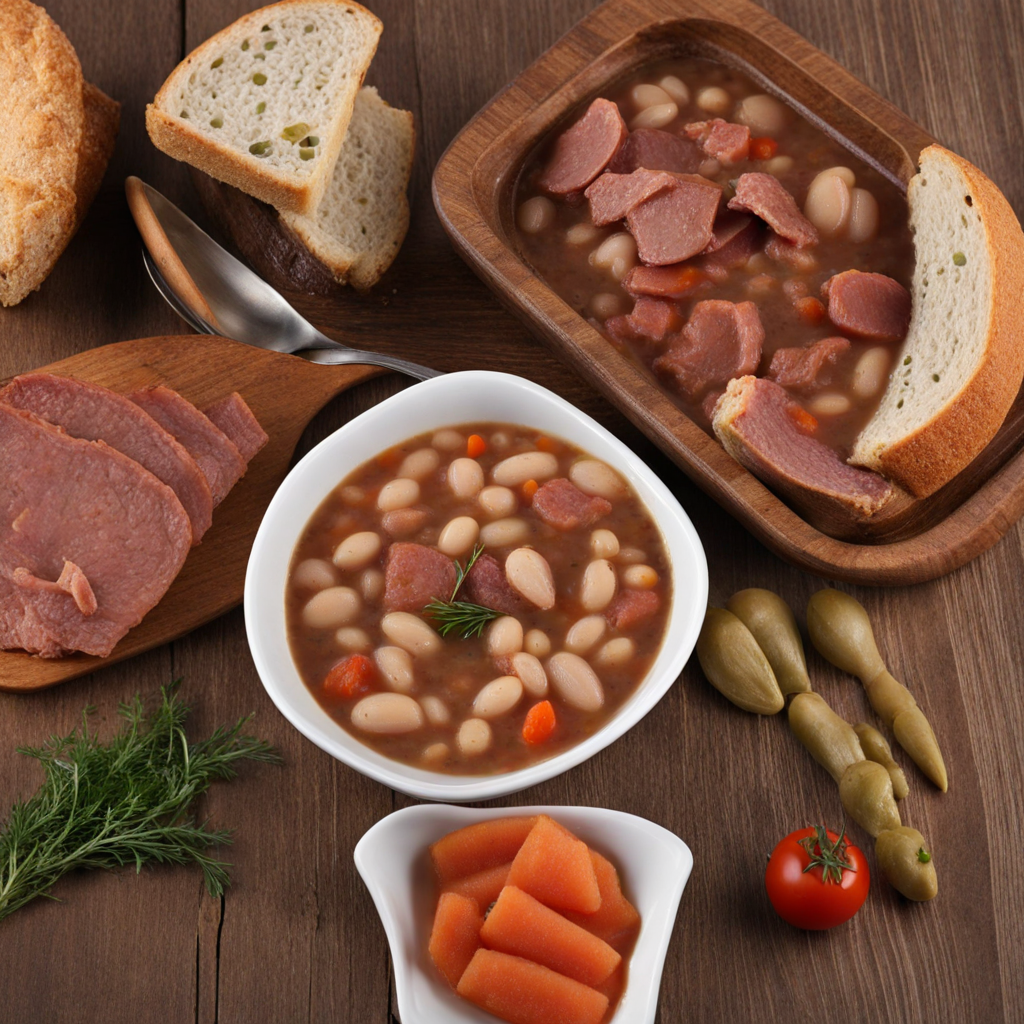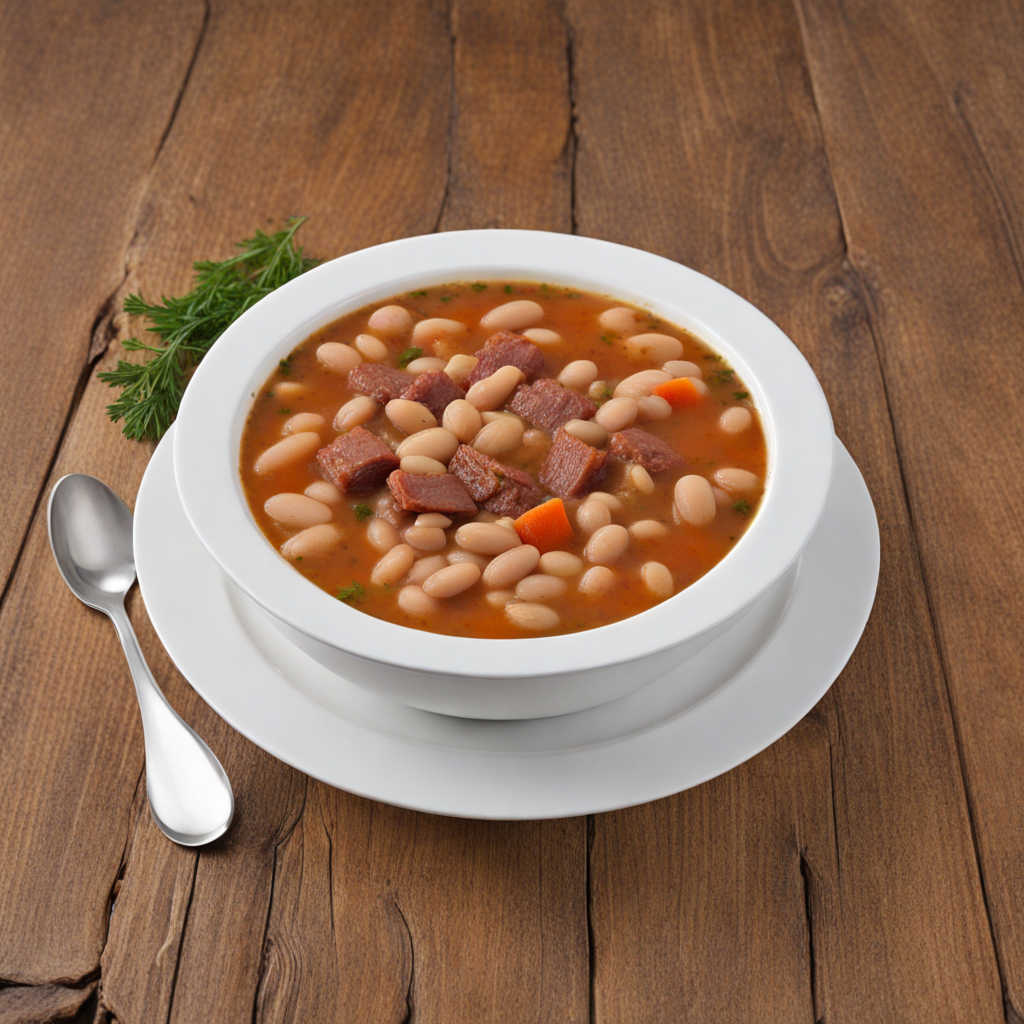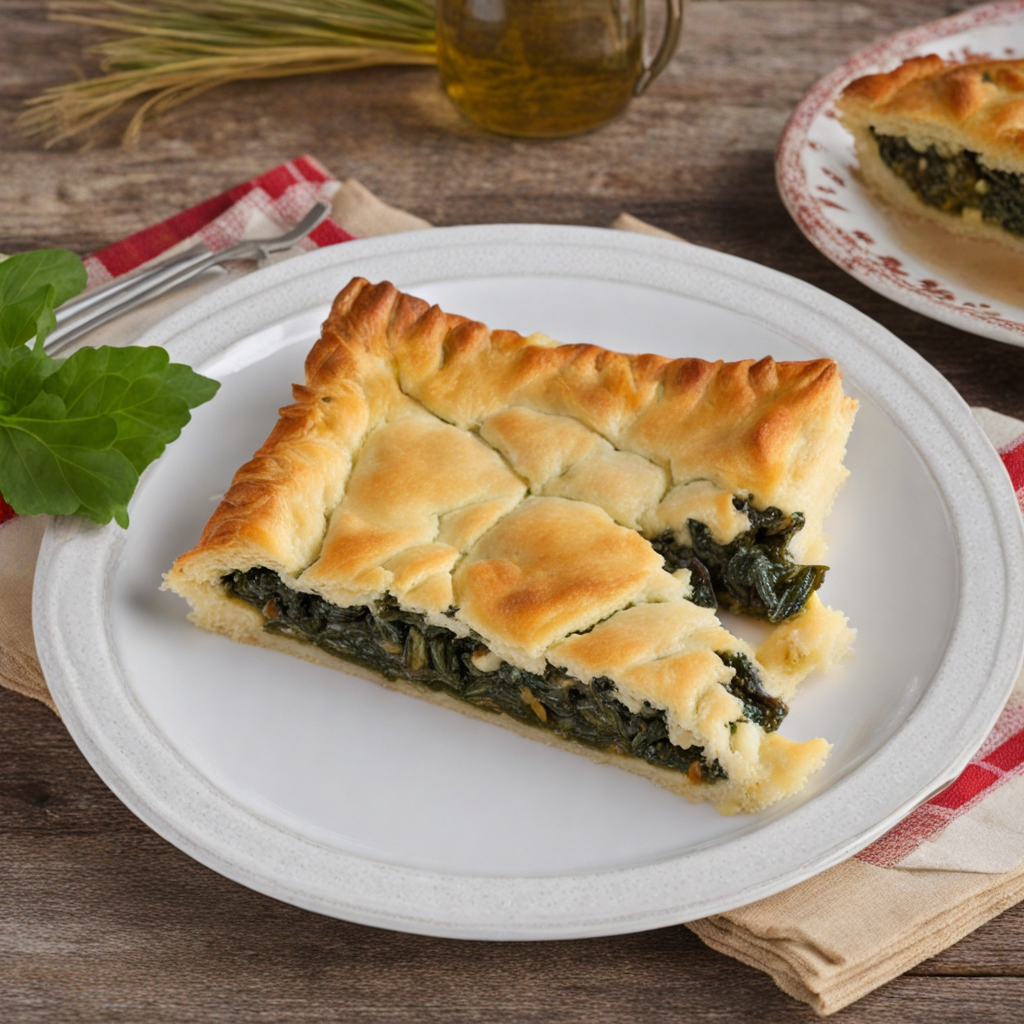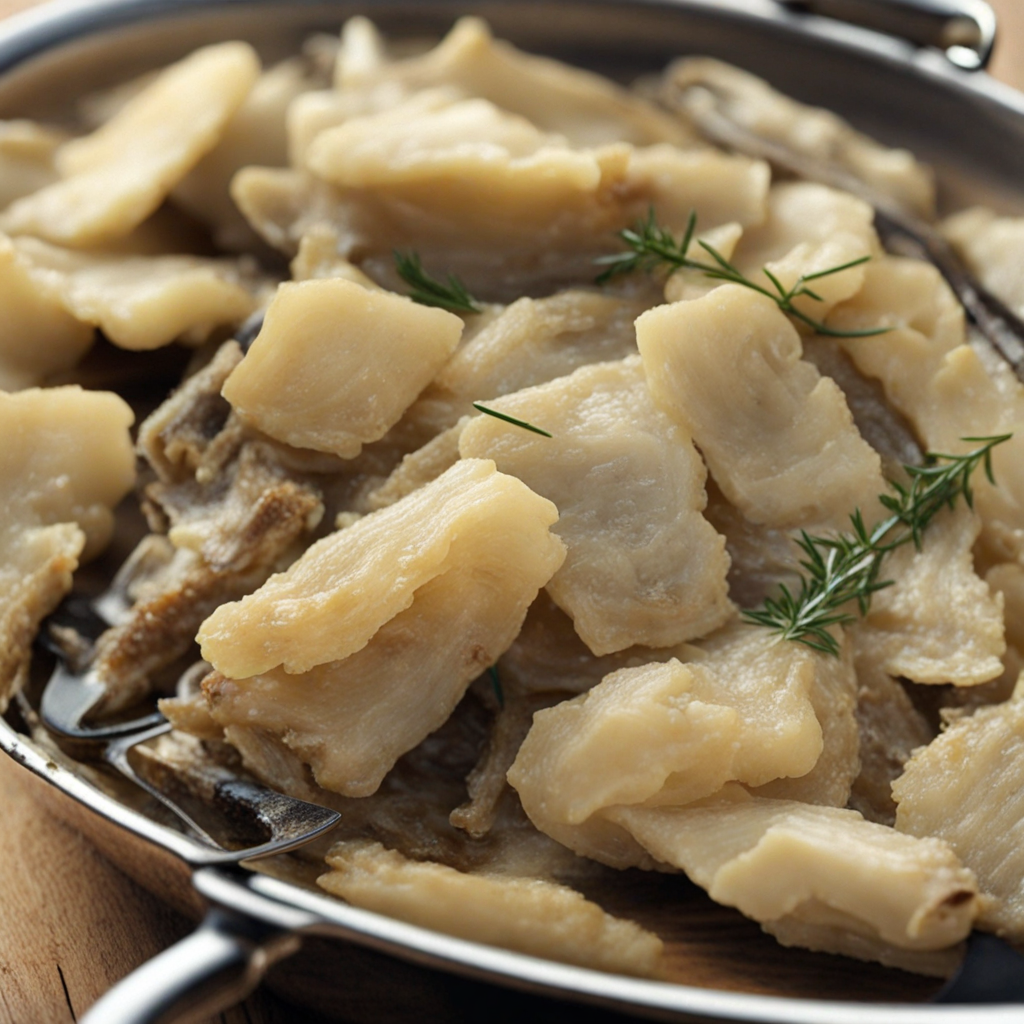Bean Soup
Bean Soup, or "Grah," is a traditional Croatian dish that showcases the heartiness of local ingredients and the rustic charm of Croatian cuisine. This comforting soup is primarily made from white or kidney beans, which are simmered to perfection to create a rich and creamy base. The beans are often paired with smoked meats, such as bacon or sausage, adding a depth of flavor that is both savory and satisfying. The combination of herbs such as bay leaves, thyme, and parsley also contributes to the aromatic profile of the dish, infusing it with a warm and inviting essence that is typical of Croatian home cooking. What makes Bean Soup truly special is the way it reflects the seasonal bounty of Croatia. In some regions, vegetables like carrots, potatoes, and onions are incorporated, adding a touch of sweetness and texture to the dish. The soup is usually seasoned with paprika, which gives it a subtle kick and a vibrant color that entices the appetite. Each family may have its own secret ingredient or method, leading to variations that highlight the regional diversity of Croatian culinary traditions. Served hot and often accompanied by crusty bread or polenta, Bean Soup is a dish that warms the soul and nourishes the body. It is commonly enjoyed as a main course or a hearty starter, perfect for cold winter days or festive gatherings. The simplicity of the ingredients belies the complexity of flavors that develop through slow cooking, making it a delightful exploration for anyone looking to discover the authentic taste of Croatia.
How It Became This Dish
The History of Grah: Croatia's Beloved Bean Dish #### Origins of Grah Grah, a traditional Croatian dish primarily made from beans, is a staple of the country's culinary landscape. Its roots can be traced back to ancient times, when beans were among the first domesticated crops, cultivated by various civilizations, including the Romans and the ancient Greeks. These early societies understood the nutritional value of legumes, which were easy to grow and packed with protein. In the context of Croatia, beans have been a fundamental component of the diet for centuries, particularly in the rural areas. The word 'grah' itself is derived from the Slavic term for beans. The dish reflects the agricultural practices of the region, where beans were often harvested in large quantities. This made grah not only a practical food choice but also an economical one, especially for peasant families who relied on it for sustenance. #### Cultural Significance Grah is more than just a dish; it embodies the essence of Croatian culinary culture and social life. Historically, it was often prepared during communal gatherings, feasts, and celebrations, reinforcing bonds among families and communities. The dish was commonly served during the colder months, providing warmth and nourishment during harsh winters. In Croatian culture, food plays a significant role in community identity and heritage. Grah stands out as a symbol of comfort and familiarity, often associated with home-cooked meals prepared by mothers and grandmothers. The preparation of grah also offers a glimpse into the culinary techniques passed down through generations, showcasing the importance of tradition in Croatian cooking. In various regions of Croatia, grah takes on different forms, reflecting local ingredients and culinary practices. For example, in the northern regions, such as Slavonia, grah is often prepared with smoked meats, such as sausages or bacon, adding depth and richness to the dish. In contrast, coastal regions might incorporate seafood or vegetables, showcasing the diversity of Croatian cuisine. #### Development Over Time As Croatia evolved through various historical events, so too did the dish of grah. The Ottoman Empire's influence during the 15th to 17th centuries introduced new spices and cooking techniques, which began to blend with the local culinary traditions. This melding is evident in some regional variations of grah that include spices like paprika, which became a staple in many Croatian dishes. With the advent of the Austro-Hungarian Empire in the 19th century, culinary exchanges flourished. The introduction of new ingredients and cooking styles led to a more refined approach to traditional dishes, including grah. The influence of other Central European cuisines can be seen in the way grah is prepared and served—often accompanied by bread or polenta, making it a hearty, satisfying meal. In the 20th century, particularly after World War II, grah became a symbol of resilience. As Croatia faced economic challenges, many families relied on simple, accessible ingredients to feed their loved ones. Grah's versatility allowed it to be adapted to accommodate whatever beans or meats were locally available, ensuring its place on the table during tough times. Furthermore, the rise of the socialist regime in the post-war era emphasized the importance of traditional food in fostering national identity. Grah was promoted as a quintessentially Croatian dish, often served at national gatherings and celebrations. This promotion helped solidify its status as a comfort food that transcends class and social barriers. #### Modern Interpretations In contemporary Croatian cuisine, grah remains a beloved dish, though it has also embraced modern twists and innovations. Chefs in upscale restaurants might experiment with gourmet ingredients, presenting grah in a refined manner while still honoring its rustic roots. Contemporary versions might include fusion elements—like truffle oil or artisanal sausages—while still maintaining the essence of the original dish. Additionally, a growing awareness of health and nutrition has led to variations of grah that focus on plant-based ingredients. Vegetarian and vegan adaptations are becoming popular, showcasing the dish's inherent flexibility. These modern interpretations not only celebrate the traditional aspects of grah but also align with current dietary trends that emphasize sustainability and plant-based eating. #### Grah in Today’s Society Today, grah is a dish that resonates with many Croatians, both at home and abroad. It is commonly served at family gatherings, celebrations, and public festivals, where it is often featured alongside other traditional Croatian dishes. The annual "Grahijada," a bean festival held in various towns, celebrates the dish and its cultural significance, bringing communities together to share recipes and enjoy the rich flavors of grah. The dish has also found its way into popular culture, appearing in cookbooks, food blogs, and television shows that celebrate Croatian cuisine. As Croatia continues to thrive as a tourist destination, grah serves as an ambassador of the country's culinary heritage, inviting visitors to experience the warmth and hospitality of Croatian culture. #### Conclusion Grah is more than just a dish; it is a reflection of Croatia's history, culture, and communal spirit. From its humble origins as a peasant food to its status as a cherished national dish, grah has adapted to changing times while remaining true to its roots. As it continues to evolve, grah will undoubtedly remain a beloved staple of Croatian cuisine, embodying the resilience and creativity of the Croatian people. In a world increasingly focused on globalization and culinary fusion, grah stands as a testament to the power of traditional foods to connect people, tell stories, and preserve cultural identity. Whether enjoyed in a rustic home or a modern restaurant, grah is a dish that celebrates the flavors of Croatia and the memories created around the table.
You may like
Discover local flavors from Croatia







